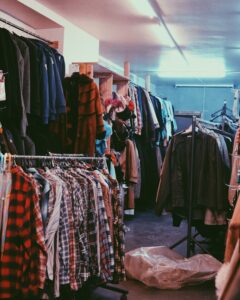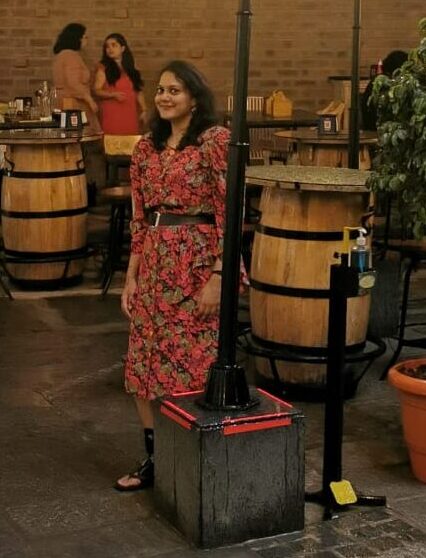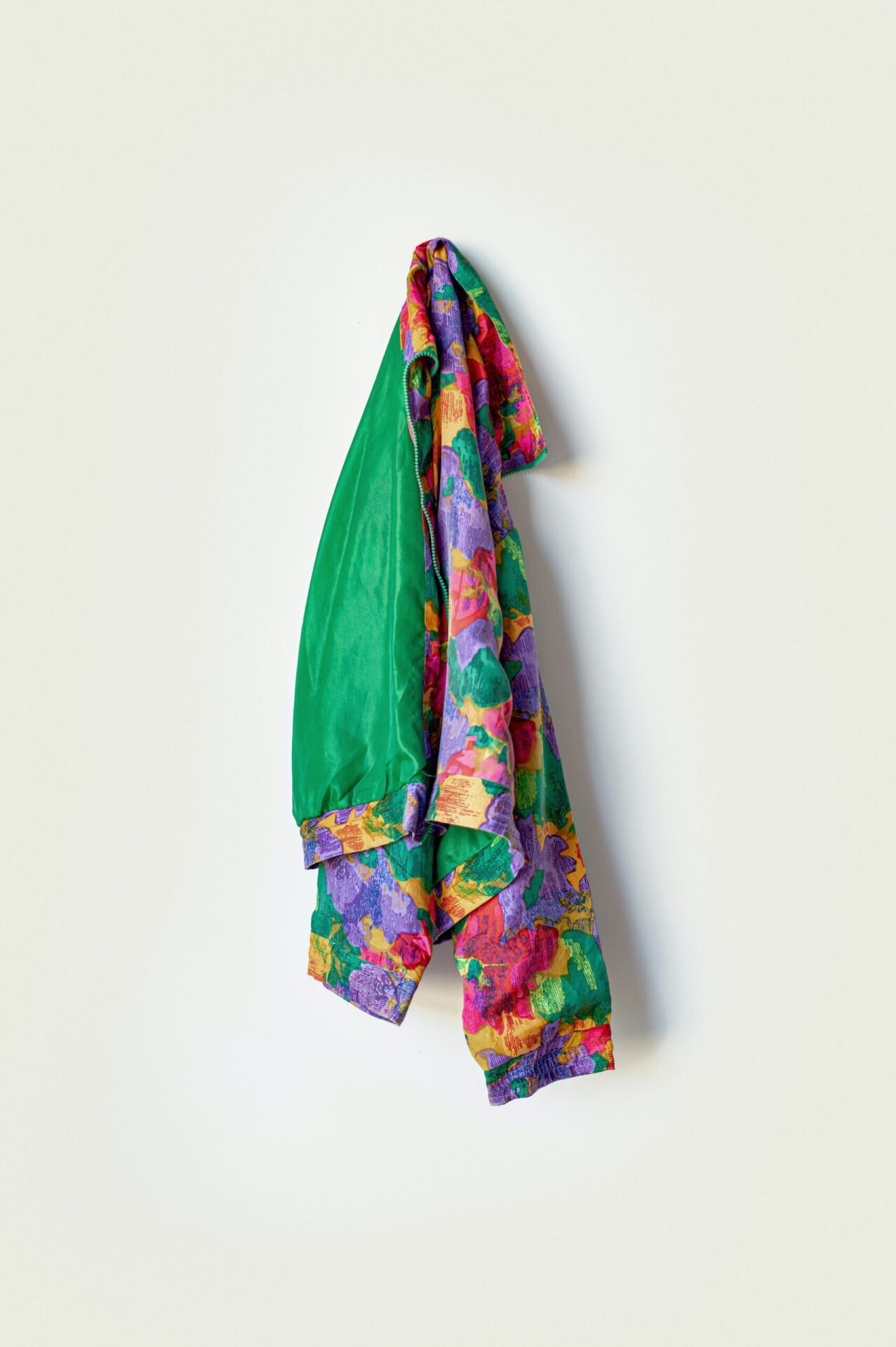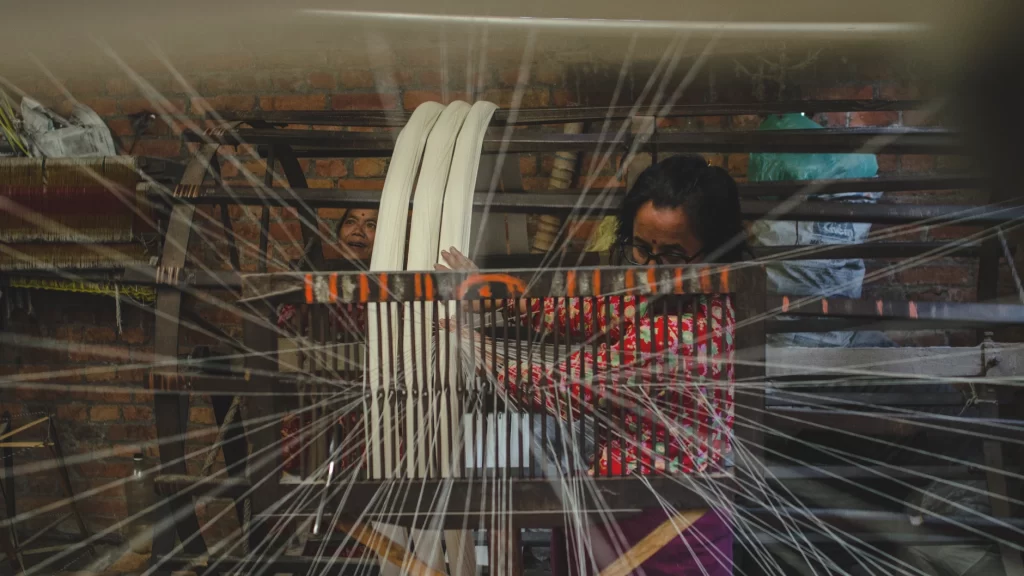The most sustainable piece of clothing is the one in your wardrobe, sure, but what if it’s a garment you no longer wear—or have never worn? According to Livia Firth, founder of Eco-Age, you need to wear a garment at least 30 times to be able to offset the carbon footprint incurred from its production. A figure she later revised to 100. According to a Euromonitor International report, the average piece of clothing is worn only seven times, before it is discarded. So how do we bridge that gap between seven wears and 100, or even 30 for a start? Especially for clothes we don’t see ourselves wearing, or that no longer fit us, and that have been lying in our closets, unworn, for a long, long time.

For a while, now, thrifting has been touted by industry pundits as the most sustainable option out there in the market. The secondhand market has been valued at $130 billion and, according to GlobalData, it is projected to grow 127% by 2026. That’s 16 times faster than the clothing retail sector. When ThredUp, the OG online thrifted and vintage fashion marketplace went public, last March, its market value immediately jumped 43% to $1.8 billion, from the original $168 million IPO. Most recently, the Stockholm Fashion Week SS23, included a show dedicated to secondhand, in collaboration with Get Styles, a style inspiration app, and Sellpy, a secondhand digital marketplace. In its very first year, Relove, an integrative platform that allows Indian brands to resell their garments through their own website, already has around 20 brands subscribing to its services.
Clearly, thrifting is here to stay. But how sustainable is it, really? Could there be a downside to it? We bring to you the lowdown on thrifting as a sustainable shopping option.
It’s better than buying new
There’s no doubt about this one. If you are going to buy, it’s better you buy preloved than brand new. ‘When you buy secondhand, you save on as much as 5 kg of CO2, or six times the garment’s weight, in the case of a heavy garment,’ says Kirti Poonia, co-founder of Relove. ‘That’s all the carbon from the production processes—dyeing, tailoring, weaving—that have now been completely eliminated.’

Thrifting is also a great circular economy solution to poor waste management-related problems and climate change. According to a report by Swedish solidarity organisation and secondhand chain, Björkåfrihet, a new piece of clothing has a greater climate impact than anywhere between 194 and 393 pieces of new clothing, depending on the item under question—less for something small and simple like a T-shirt, and more for something bulky and complex like a jacket.
It’s your window to ‘unique’
In her book, Loved Clothes Last, Fashion Revolution founder Orsola de Castro makes a case for buying preloved. Even as you’re likely to find enough and more fast fashion in thrift stores, there is the extreme likelihood of you stumbling upon something that’s one-of-a-kind—a piece from a very old collection that’s long been out of stock, or perhaps something that may not be en vogue but is every bit as stylish, or even a luxury item that may otherwise have been out of budget. With avant garde fashion hubs like Bodement and No Borders Shop offering rare, vintage finds, often upcycled and designed into unique, one-of-a kind garments and accessories, this does, indeed, seem to be the case. ‘I’ve sold plenty of unique pieces of contemporary clothing, vintage apparel and more,’ says Mumbai-based Sreshta Bhattacharya, who runs the 2NAi thrift store on Instagram. ‘I also sell my own customisations, as I’m looking to expand and introduce interesting products to my brand.’

In my own experience of thrifting, I’ve found plenty that’s otherwise been hard to find. Like a gorgeous pair of rust-orange woollen trousers. I’d been on the lookout for a smart pair of winter-appropriate trousers for years, to no luck, and finally found them at a thrift store. Without the option of trying them on, the fit isn’t perfect, but nothing that can’t be fixed with a little nip and a tuck!

Vaani Arora, a 27-year-old senior associate at LBB Delhi NCR, has built her own fashion statement, off of thrift store finds. ‘I love buying shirts of all kinds, from thrift stores,’ she says. ‘There’s such a variety to be found… Oversized shirts, regular shirts, men’s shirts, you name it. I love how much I can do with them, by way of styling and creating my own style.’
Making luxury accessible
De Castro talks of how, over the years, luxury brands seem to have lost their sheen, opting for volumes over craftsmanship, but that wasn’t always the case. A luxury, vintage item that you’ve been lusting after, is indeed an investment, so long as it fits a need, and your style. This is also true of things that are too expensive to buy off the shelves, and you paying good money to the brand isn’t really helping anyone but the profiteering brand. Like luxury bags, which have been associated with 80 per cent of the deforestation in the Amazon. Is that a demand we’d like to feed? Shopping secondhand lowers the consumer demand for new production. Besides, when you buy a luxury ‘vintage’ garment or accessory, which is in excellent condition, you have proof of the item’s quality. It’s already withstood the test of time, and all you need to do is care for it the right way.

The damage is already done
De Castro also emphasises buying only vintage if you really want that garment with fur or leather. Vegan leather and faux fur are often fossil fuel-based, leading to a massive environmental impact. And while vintage/preloved leathers and furs do not preclude animal cruelty, they’re not new—the damage has already been done, often too far back in the past. Poonia makes a similar case for export surplus and rejects. ‘If it remains unsold, it will end up in landfill,’ she says, something she’s now trying to prevent through Rescue, an arm of Relove, that helps brands sell deadstock and damaged inventory.
When you thrift, whether it’s vintage, preloved, or surplus and rejects, no new resources are used up in the production of new items. It simply shifts the narrative from ‘new’ to ‘new to us’.
It belies the ‘disposability’ of clothes
When you buy something that has weathered time and wears, it drives home the value of clothes that are well looked after—the skill, the labour and the resources that go into their making. That clothing can be sold and resold, repeatedly, as long as it’s cared for and not damaged for want of care, further reinforces its value. This is especially significant in the case of transient items, like maternity and kids’ wear, which often get the short end of the stick when it comes to care, because they have limited value. But when you appreciate that they can, in fact, be resold, it incentivises caring for them. ‘It’s a win for everyone, including the planet,’ says Shivangini Padhiyar, co-founder of sustainable clothing brand The Summer House, which has integrated the Relove app into their website. ‘The customer can sell what she no longer needs to someone who appreciates the quality and craftsmanship of our clothing.’

Poonia points out that most homegrown sustainable brands are turning to resale for circularity and longevity of their garments. ‘Sustainable businesses are nascent and new to our country, and for them survival is a serious priority,’ she says. Padhiyar backs this up, when she states that The Summer House had long been on the lookout for a process whereby they could collect old or unwanted TSH clothes that they could renew or recycle. ‘Just that the idea was not as sharp as what Relove offered us,’ she says. With Relove taking care of the logistics, quality checks and pricing, the process is not only smoother, but ‘relovers’ have come to view their clothes as items that have resale value and deserve being looked after.
However, thrifting comes with its own pitfalls.
Consumer culture and greenwashing
Over the last few months, thrifting has come under the scanner, as a conversation that is fast being derailed by consumer culture. Because guess what, it is possible to overconsume secondhand or thrifted clothing. It’s much cheaper, so it’s easier to buy more of. When things are in great condition, but the prices are still marked down, because it’s been owned before or because it’s surplus, it feeds into the ‘sale’ mentality—when something’s a steal, you want to buy more naturally. And with every passing day, this culture is making thrifting mimick the fast fashion model.

With the secondhand apparel market projected to grow, as mentioned above, resale is also profitable, with plenty of brands, including Levi’s, adopting it. And while resale is a great way to help sustainable brands like The Summer House become more circular, it also serves as a greenwashing tool for fast fashion brands that have done little to change their production systems or scale back on volumes. As long as brands are adding more pieces to their collections on a weekly basis, adding resale to their business model is simply akin to adding a new revenue source. As per Remake’s 2021 Fashion Accountability Report, none of the global brands with resale options could prove that their circular initiatives were displacing the linear production of new clothing.
There is also the case of online thrift shop owners who’re often just offloading their own wardrobes, to make room for more. ‘Instagram has made it really easy for independent thrifters and teenager entrepreneurs to start their own business,’ says Poonia. ‘And that’s great, as long as the intention is right, and thrift stores are verifying their products.’ It’s one thing to sell because something no longer fits you or your style, or maybe you want to declutter. As Poonia says, it’s demotivating to get ready in front of an overflowing wardrobe that doesn’t fit you. But it’s quite another thing to sell just so you can buy more!
Reliability and quality
For most buyers, this is by far the biggest problem with thrifting, especially since thrifting in India is mostly online. From sizing to quality to verifiability to reliability of the seller, there are plenty of caveats. Chandigarh-based Kirti Goel, founder of Ptal, once received a torn sari. ‘You can never tell the quality of the fabric, since you’ve never seen it,’ she says. In my own experience, I once I bought a top that had been upcycled with applique, but the fabric began to come apart around the applique work while I was still wearing it—for the very first time. Arora once received a shirt with holes in it. ‘And it smelled,’ she squirms. Rishika Goyal, creative head at Pretty As You Please, has faced several sizing issues. ‘And because it’s thrifted, there is no exchange or return option,’ she says.

These issues are not even limited to independent thrifters. Poonia relates several instances where they’ve had to cancel orders and figure out ways to rework their systems. One time, a garment got sold, and the seller suddenly discovered a newfound love for it. ‘Neither the brand nor Relove can do anything about it,’ she says. Another time, an order had to be cancelled because the garment didn’t clear quality checks. ‘People have the right intention, but sometimes it just doesn’t translate on-ground,’ she says. ‘Like an international customer who was determined to sell some of her clothes. We don’t yet have a provision for international customers, so they put their address as Andaman & Nicobar! One of the garments got sold, and then there was no way for us to get around it. We had to subsequently disable a few systems.’

Thrifting logistics
For most thrifters—and sellers—logistics are still an issue. Since it’s a nascent, unorganised sector, there are no centralised systems in place. For many, transferring money to the personal account of an Internet stranger promising to sell you something may be a huge red flag. And then, all the processes are manual, which can lead to many issues. For instance, one of my own shipments was sent to an old address the seller had with them, while yet another seller put an incorrect phone number on a rather expensive package. ‘What most people don’t understand is, most of the time it’s just one person running the whole business, which can get overwhelming,’ says Bhattacharya. While these are issues Relove aims to iron out, with their tech updations and specialised teams, it’s not as simple as that. ‘We struggle with logistics for brands with low price points,’ Poonia points out. ‘With resale value of the garments being even lesser, it becomes a challenge to absorb all the costs.’

Mindsets around secondhand and thrifting
Even as the secondhand market is booming, there is still the issue of mindsets surrounding preloved. ‘I was taking a workshop on secondhand clothing, for students, when one of them asked me, “but what about the energy of the previous owner that the garment is carrying with it?”,’ reveals Shruti Singh, country head for Fashion Revolution India.
‘We’ve witnessed excitement and apprehensions, in equal measure,’ reports Poonia. ‘Sellers are often emotionally attached to their garments. The “ek din pehenenge” mindset is very much rife. So when they do sell, it’s often about making place in their wardrobe.’ ‘I just wish people were more accepting towards it,’ adds Bhattacharya. ‘We are getting there but I’m still waiting to see that big change!’ Poonia believes we can get there. ‘We’ve done it in the past—growing up, we all wore hand-me-downs—when I was 15, I wore my mum’s clothes from when she was 15,’ she says. ‘There’s no reason we can’t do it again.’






